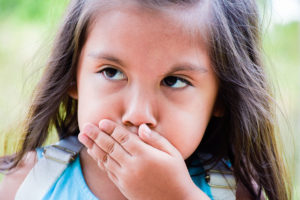Blog

E-cigarettes
E-cigarettes are devices that heat a liquid, usually containing nicotine, flavoring and other chemicals, into an aerosol that can be inhaled. Other names for e-cigarettes include vapes, vape-pens, e-cigs, e-hookahs, mods, and electronic nicotine delivery systems. They can look like traditional pipes, cigarettes, or cigars, or like pens, USB devices or other everyday objects. While

Stuttering
Stuttering is a speech fluency disorder characterized by repetitions of sounds, syllables, or words along with pauses in speech called blocks. Stuttering is a normal part of speech development in children when their speech and language abilities have not yet developed to keep up with what they want to say. This typically occurs between ages

Youth Suicide
Adolescence is a time of tremendous growth and potential. Teens can have difficulty navigating new milestones in preparation for adult roles. These transitions can lead to various mental health challenges that can be associated with increased risk for suicide. Suicide is the second leading cause of death among youths age 15 – 24. Approximately one

Childhood Cancer Awareness Month
The month of September is designated as Childhood Cancer Awareness Month. Childhood or pediatric cancer is not just one disease, rather many different types of cancer that affect children and adolescents at a rate of about 15,000 patients each year in US. The most common type is leukemia, a cancer of the blood, followed by

Children’s Eye Health and Safety
Eye health and safety begins at birth when your pediatrician shines a light in your infant’s eyes and checks for the “red reflex”. This is the same thing that you see in photographs with a flash and it checks to make sure that there isn’t something between the front of the eye and the retina

Hand, Foot, and Mouth Disease (HFMD)
Hand, foot, and mouth disease is an illness caused by a group of viruses that are generally most active during the summer and fall. It’s the most common in infants and children under age 5 but can at times cause disease in older children and adults. Typically the illness starts with a fever which can
